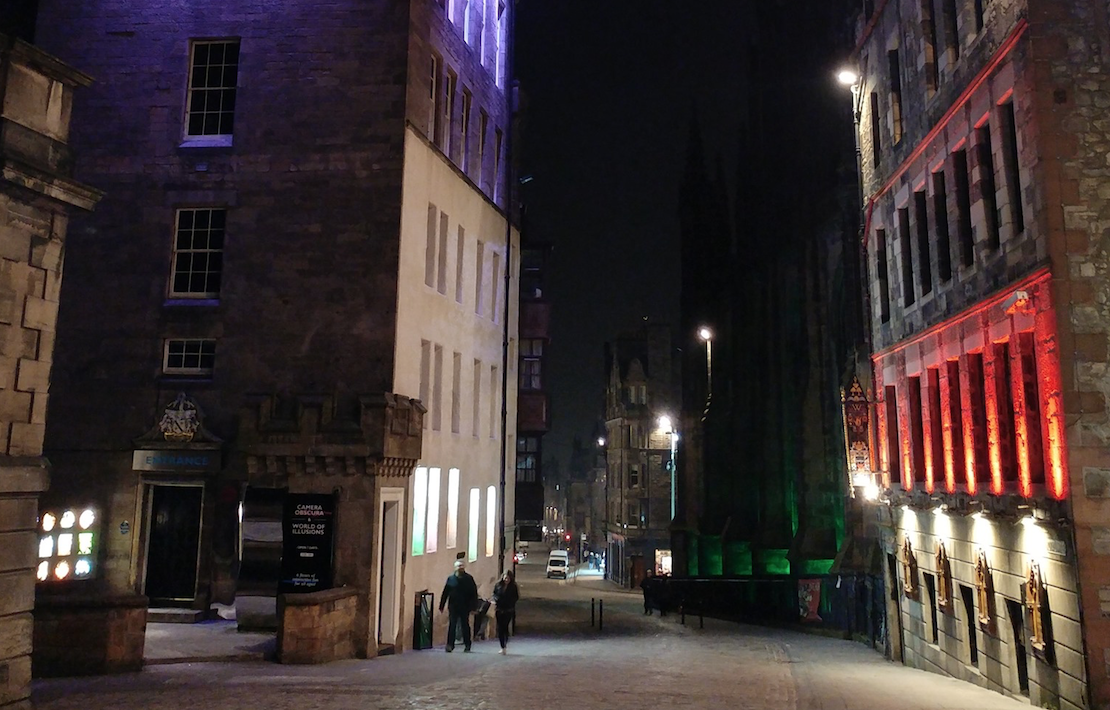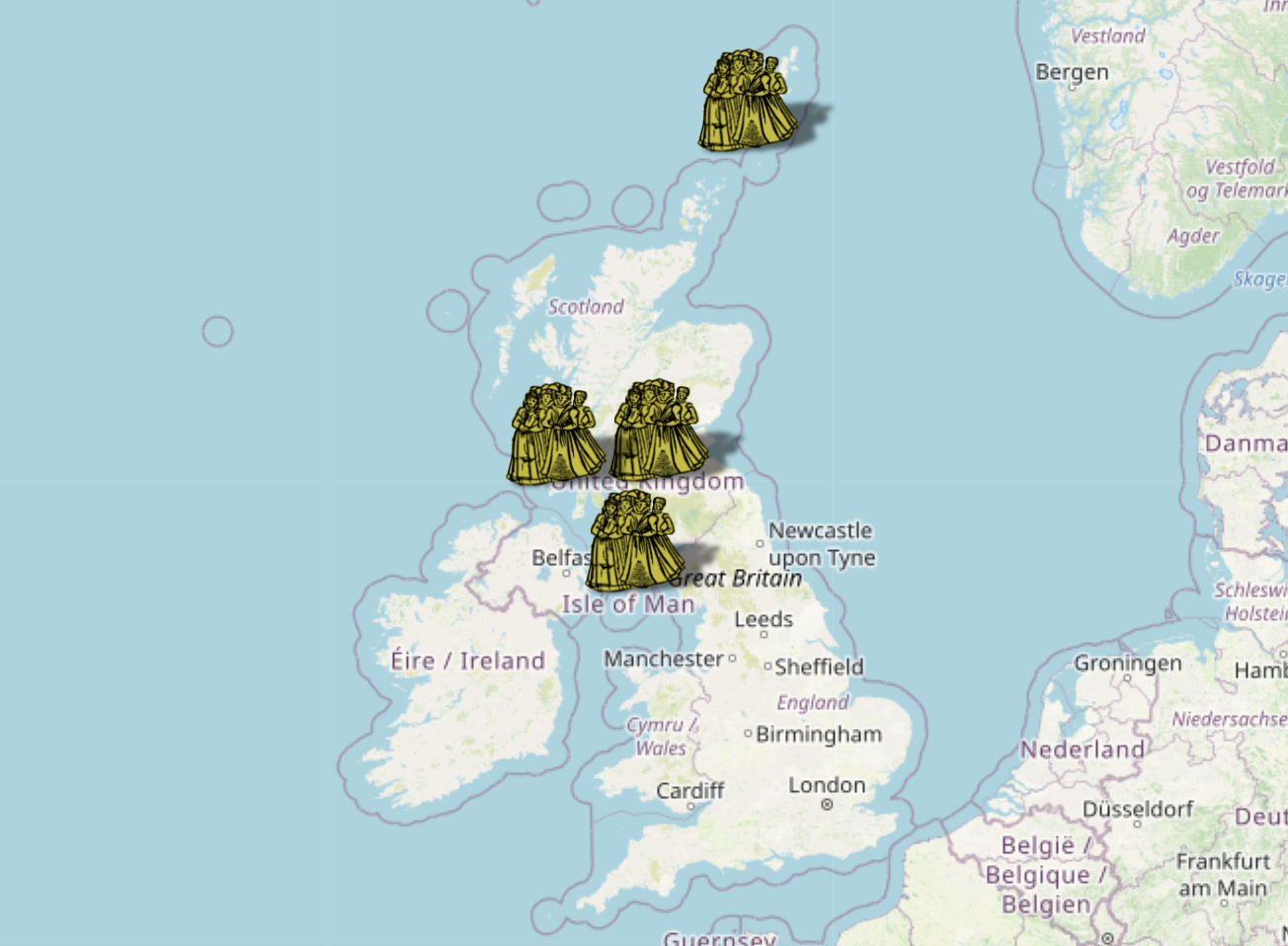Putting Victims of Scotland's Witchcraft Trials on The Map
23rd Jun 2021
Written by Mercat Tours Storyteller Simon Bendle
You don’t have to join an underground ghost tour to hear Edinburgh’s most spin-chilling tales. Arguably, the Old Town’s grisliest stories unfolded at its highest point, Castlehill – the spot where 300 alleged witches were burned at the stake. More witch-burnings happened on Castlehill than anywhere else in Scotland – the site no doubt chosen for maximum impact, its fiery executions seen for miles around. But of course it wasn’t just at Edinburgh’s Castlehill that victims of the 16th and 17th-century witch crazes were killed.
Clusters of witch trials across Scotland
Tens of thousands of alleged witches met similar fates right across Europe - in Germany, Denmark, England, Poland, France, Norway, Switzerland and beyond. And many other parts of Scotland saw witch-burnings, too.
In 2019 a University of Edinburgh intern named Emma Carroll worked with Wikimedian Ewan McAndrew to produce an interactive map showing the horrifying scale of Scotland’s witch trials.
The map records and remembers the ordeals of more than 3,000 Scots accused of witchcraft - women and men. Scrolling through it is a stark and sobering experience. A quick glance shows clusters of witch trials in almost every corner of Scotland – from the Highlands and Islands to the Borders. Zoom in and you get the names of the poor souls involved, sometimes accompanied by grim details of what befell them.
`

© Edinburgh University - Interactive Map of Witch Trials in Scotland
Remembering where witches were persecuted
Marion Layland, for example, was convicted of witchcraft in Orkney in 1633 after her son-in-law claimed he saw her “at a meeting with the Devil”. Her fate: capital punishment. A female “vagabond” called Christian Reid was put to death in Aberdeen in 1597 for being “in Satan’s thrall”.
Alexander Lyle, of Paisley, was only 15 when he was accused of sorcery in 1699. Lyle apparently had fits and was said to be the son of a witch.
Barbara Honeyman, meanwhile, was stripped, and her skin examined, head to toe, for the “Devil’s mark” before she faced trial in Falkland in 1661. It remains as important as ever to remember what happened to these people, the torment and torture they endured. It is also important to know exactly where their horrifying persecution took place. Thanks to the University of Edinburgh’s great map, we have a simple answer: it took place virtually everywhere.
@mercattours Replying to @JustLaura Geillis Duncan was not just a fictional character! Many people recognise her name from the series, Outlander. But Geillis Duncan was a real victim of the Scottish Witch Trials. She was NOT a villain. A young woman, she was a servant in 1590 when she was accused of witchcraft and...’interrogated’ by her master. She implicated others (like Agnes Sampson and John Fian) in a forced confession. The Scottish Witch Trials were far worse than the well-known Salem Witch Trials: nearly 300 people were executed at Edinburgh Castle alone, whereas 19 were executed in Salem. We’re glad that Geillis Duncan has become a bit of a household name, but we also think it’s important to recognise and respect her real story as well. Please, join us this summer on a Witches: Trial & Truth tour to learn more about the real people accused of witchcraft in Scotland (and to hear centuries of myths dispelled). Tickets through our bio. ✨ [Video description: a 1-minute video exploring the Scottish Witch Trials and the story of Geillis Duncan, using animations and old documents to illustrate a voiceover. End description] #edinburgh #scotland #historytok #hiddenhistory #hiddengems #darkhistory #witchcraft #witchtrials #witchtok #outlander #geillisduncan ♬ original sound - Mercat Tours
Our Witches: Trial & Truth history tour tells the stories of those accused during the Scottish Witch Trials, remembering the people who were just like you.

